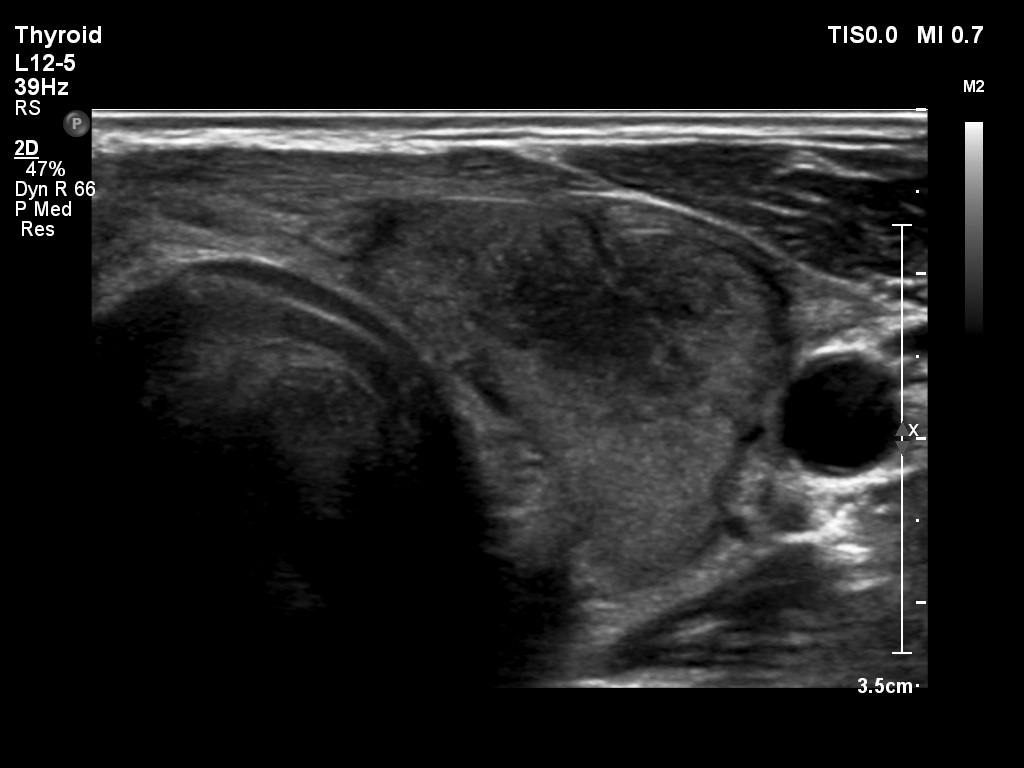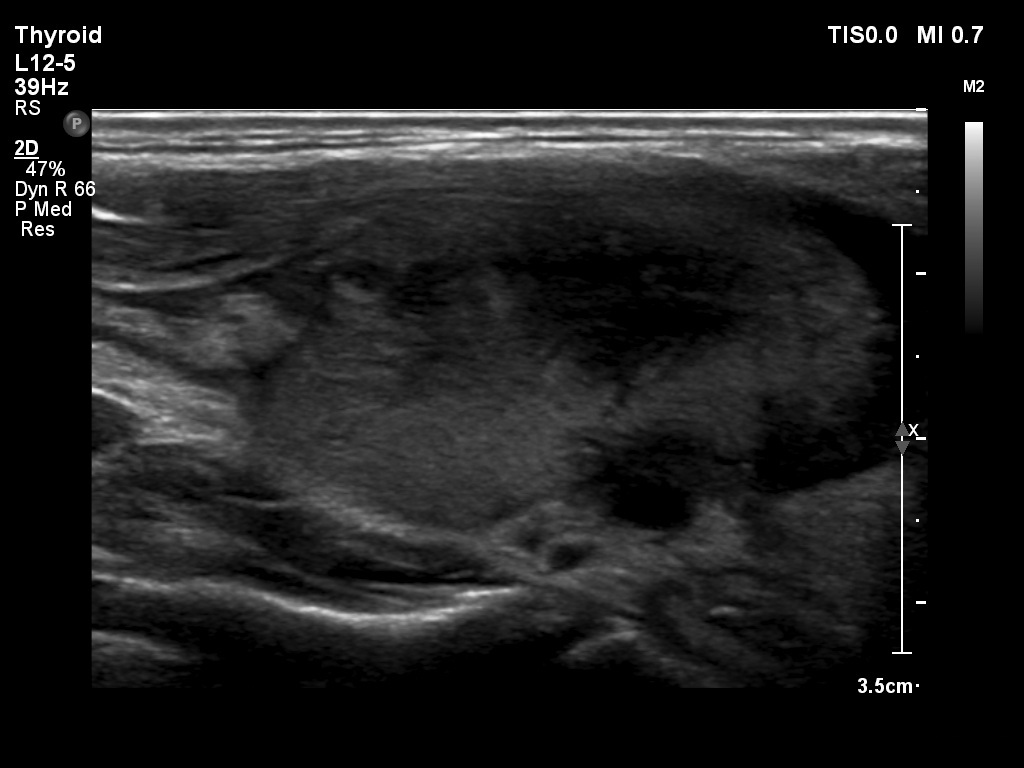The borders of the nodule - case 1036doi: 10.24390/thyrocase1036bord.00 |
|
First examination (1st to 3rd rows of images):
Clinical presentation: A 47-year-old man was referred for evaluation of complaints suggesting subacute thyroiditis. He suffered from recurrent attacks of pain in the region of the thyroid radiating to the jaws. The pain was originally located to the left side of the neck, but the right side of the neck became painful 2 weeks ago. He had subfebrility, occasionally fever. He got 3 courses of antibiotics without any effect. The GP initiated investigation toward lymphoma of the neck.
Palpation: Both lobes were hard and painful.
Laboratory tests: euthyroidism with TSH-level 0.27 mIU/L, FT4 16.7 pM/L, CRP 35.1 mg/L, ESR 41 mm/H, aTPO 10 U/mL.
Ultrasonography: Both lobes presented hypoechogenic ill-defined areas. The echogenicity index was 80% in the right lobe while 20% in the left thyroid. The vascularization was significantly decreased.
Elastography demonstrated hard areas according to the hypoechogenic field in the left lobe, while almost the entire right lobe proved to be hard.Cytological diagnosis: subacute, granulomatous de Quervain's thyroiditis.
Suggestion: Steroid therapy was initiated and resulted in prompt amelioration of complaints.
Intermediate consultation 3 months after the initial examination:
Clinical presentation: The complaints of the patients ceased within a day after steroid therapy was started and did not recur even after discontinuation of the 6-week steroid treatment. His blood pressure temporarily increased on steroid therapy but normalized without medical intervention.
Palpation: The thyroid was not palpable.
Laboratory tests: TSH-level 21.3 mIU/L, FT4 8.3 pM/L, CRP 1.6 mg/L.
We suggested the next checking of thyroid function in 3 months.
14 months after initial examination (4th row of images):
Clinical presentation: The patient had no complaints.
Palpation: The thyroid was not palpable.
Ultrasonography: The size of the thyroid decreased dramatically and became atrophic. The right lobe still presented a small, severely hypoechogenic area. In contrast with the first examination, the basic echo structure of the left lobe was not normal but moderately hypoechogenic. The vascularization was decreased and average, right and left lobe, respectively.
Laboratory tests: hypothyroidism with TSH-level 13.8 mIU/L, FT4 11.4 pM/L, CRP 1.1 mg/L, aTPO 9 U/mL.
Suggestion: Considering the improving TSH, we suggested repeat blood test in 6 months but did not start with replacement therapy.
30 months after initial examination (5th row of images):
Clinical presentation: Six months after the previous examination the TSH level remained elevated (14.1 mIU/L) and daily 50 microgram levothyroxine therapy has been initiated. The patient had no complaints.
Palpation: the thyroid was not palpable.
Ultrasonography. The pattern has not changed since the 14-month examination.
Comments.
-
There were several unusual findings in this patient. First, the thyroid contained severely hypoechogenic areas and the borders of the hypoechogenic areas were rather puzzle-like than ill-defined. The latter increased the possibility of a concomitant autoimmune thyroiditis.
-
Nevertheless, the patient had not only clinically but even cytologically subacute thyroiditis at first examination; the cytology is decisive.
-
More than 95% of patients with subacute thyroiditis present a complete normalization of thyroid functions one year after the last painful episode, while the TSH of this patient remained elevated 14 months after the painful attack. Moreover, the echo pattern of the thyroid has also remained abnormal, and the basic echo structure of the left thyroid has worsened, it has become hypoechogenic.
-
Regarding the borders. The hypoechoic areas have partly blurred, partly lobulated margins.

























